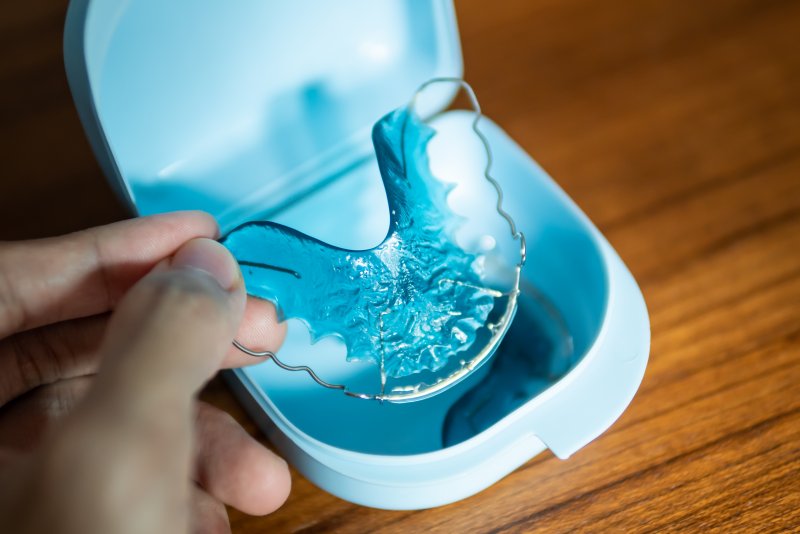
After completing orthodontic treatment, your dentist will provide you with a custom-made retainer. These oral devices are designed to keep your newly aligned smile in place, so your teeth don’t try to move back to their original position. But over time, just like most restorations, they need to be replaced. Daily wear and tear can cause them to break down or even become damaged. A dentist in Westminster is here to explain the average lifespan of a retainer and 3 simple ways you can tell it’s time to have a new one made for your smile.
How Long Do Retainers Last?
There are two different types of retainers: bonded and removable. Depending on your dentist’s recommendation, one might be better than another. With bonded retainers, these are permanently affixed to the backside of your teeth. Those that exist on the upper row of teeth can expect to last an estimated three years; however, one that is placed on the lower arch may last much longer simply because it’s not affected or bothered nearly as much.
With a removable retainer, the average lifespan is as short as a few months or as long as 5-10 years. The Essix retainer tends to require frequent replacement because they can warp over time from living in the mouth for eight hours each night as well as teeth grinding.
You may also discover with Invisalign, you will receive a Vivera retainer that matches your new tooth position. Many patients receive them as a set of four, each lasting one year.
3 Ways to Tell You Need a New Retainer
While it is beneficial to know the general lifespan for your retainer, there are always things that can happen that require you to get a new one much sooner than you originally anticipated. To help you identify when it’s time to talk to your dentist about a replacement retainer, here are three signs to look for:
- It No Longer Fits Correctly – Should your retainer begin to lose its shape, it’s time to have a new one created. The point of these devices is to keep your teeth firmly in their new location. If it becomes warped for any reason, you’ll need to have a new one created.
- It Is Damaged – Various materials can be used to create your retainer (i.e., plastic, wires), but if you notice cracks, there is a good chance they will grow over time, causing it to eventually break. Keeping them in a protective case when not wearing them and avoiding hot environments can minimize the potential damage that can happen to your retainer.
- Calcium Buildup – Cleaning them with a soft-bristled toothbrush and a non-abrasive toothpaste can help keep them free of tartar, but if you neglect caring for your retainer, too much calcium can build up, causing you to need a replacement.
No matter how diligent you are with taking care of your oral device, it will eventually need to be replaced. Knowing what to look for will help you ensure that your new smile alignment isn’t affected when it’s time for a new retainer.
About the Author
Dr. Joanne Bancroft has been practicing dentistry since 2003. With experience and training in providing Invisalign clear aligners to patients suffering from crooked teeth and misaligned bites, she is eager to offer orthodontic assistance. From start to finish, she remains with patients throughout their treatment, even providing safe and effective retainers to ensure teeth remain in the newly aligned position. If you are unsure if your oral device needs to be replaced and want to avoid a potential shift in your smile, contact us at (720) 458-6561.
